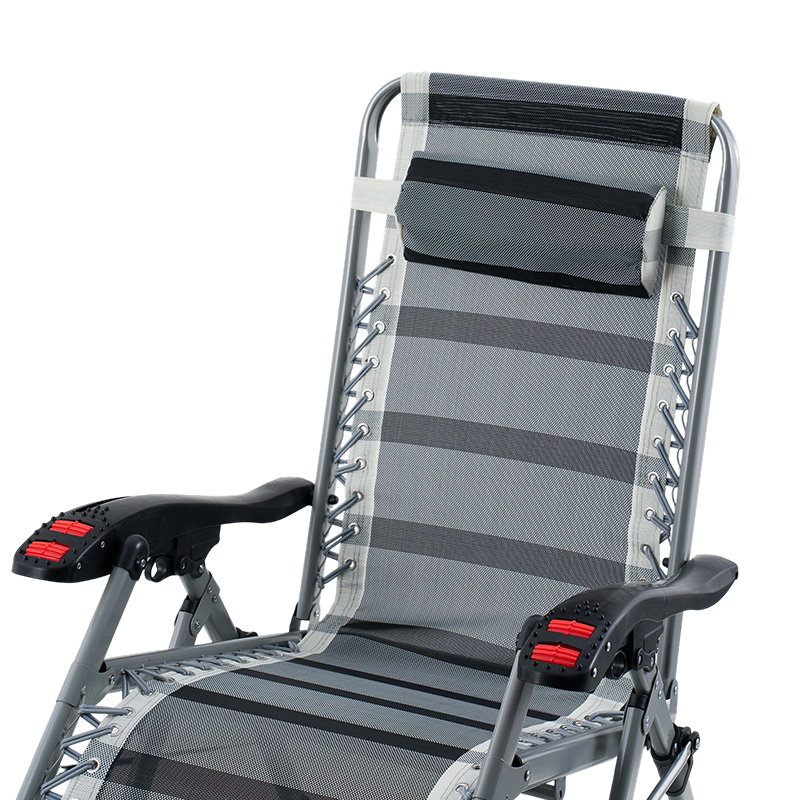Choosing the right material for a foldable sun lounger is essential for comfort, durability, and ease of use. Outdoor furniture faces unique challenges, including sun exposure, moisture, and frequent movement, making material selection a key factor in overall satisfaction. Among the common options, aluminum, wood, steel, and synthetic fabrics each offer distinct advantages.

Aluminum frames are popular due to their lightweight yet sturdy nature. This material makes foldable sun loungers easy to move, transport, and store without compromising stability. Aluminum is also resistant to rust, which is particularly important for loungers used in humid or coastal environments. Its low-maintenance quality ensures that it remains functional and visually appealing with minimal effort.
Wooden frames, often made from teak, eucalyptus, or acacia, offer a natural and warm aesthetic. Teak, in particular, is highly durable and naturally resistant to decay, making it suitable for outdoor use. Wooden loungers can blend seamlessly into garden or patio settings, although they require occasional care, such as oiling, to maintain their longevity and appearance.
Steel frames provide exceptional strength, particularly for heavier users or loungers with additional features like adjustable backrests or cushioning. Powder-coated steel resists corrosion and adds a sleek finish, combining strength with aesthetics. However, steel loungers are typically heavier than aluminum, which can make portability more challenging.
The fabric used in foldable sun loungers also plays a crucial role. Mesh or textilene fabrics are breathable, quick-drying, and easy to clean, enhancing comfort during long periods of sunbathing. Padded or cushioned surfaces add softness but may require extra care to prevent mildew in damp conditions.
Portable composite furniture patio lawn chairs are increasingly popular for their balance of durability, comfort, and low maintenance. Composites are made by combining materials such as resin, plastic, and recycled wood fibers to create a strong, lightweight, and weather-resistant product. The question is whether these chairs can reliably withstand the variety of weather conditions they may encounter.
Composite materials are designed to resist common outdoor challenges such as rain, UV exposure, and temperature fluctuations. Unlike natural wood, composite materials do not warp, crack, or rot over time. Many composite lawn chairs are treated with UV inhibitors to prevent fading or discoloration, ensuring they retain their appearance even after prolonged sun exposure. This makes them suitable for patios, gardens, and poolside areas that receive full sunlight throughout the day.
Water resistance is another advantage. Composite materials repel moisture, preventing the growth of mold or mildew and avoiding the structural weakening that can affect untreated wood. Even in regions with frequent rainfall, these chairs remain functional and safe, reducing the need for extensive maintenance. Additionally, the lightweight nature of many composites allows for easy relocation, which is helpful during storms or other weather events.
Despite these strengths, conditions can still influence longevity. In areas with heavy snow, prolonged exposure to ice or freezing temperatures may require storage to prevent stress on joints or fading of finishes. Similarly, strong winds can topple lightweight chairs if they are not secured. However, for typical outdoor conditions—sun, rain, and moderate wind—composite patio lawn chairs perform exceptionally well.
The design and construction quality also impact weather resistance. High-quality composite chairs feature reinforced joints, corrosion-resistant hardware, and ergonomic shapes that distribute weight evenly. These details enhance durability and ensure comfort while maintaining stability across varying conditions.

 English
English Español
Español عربى
عربى